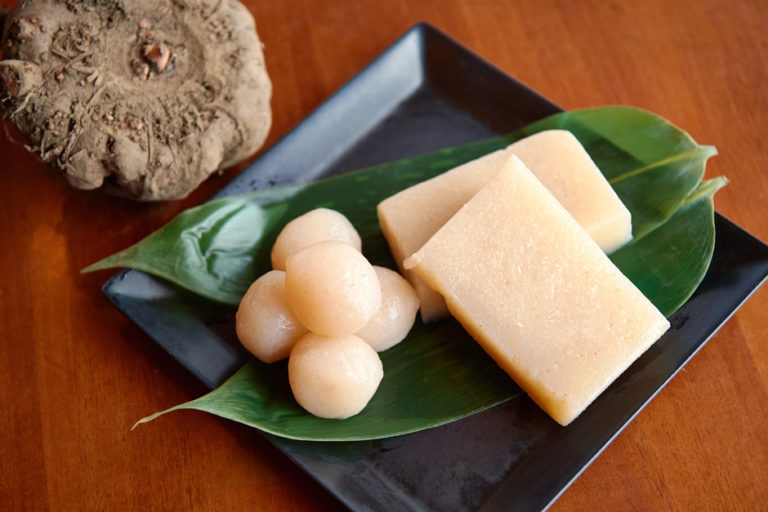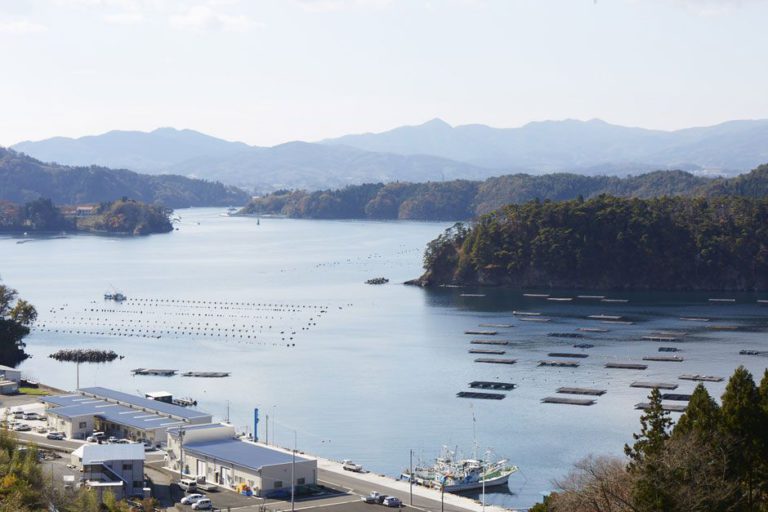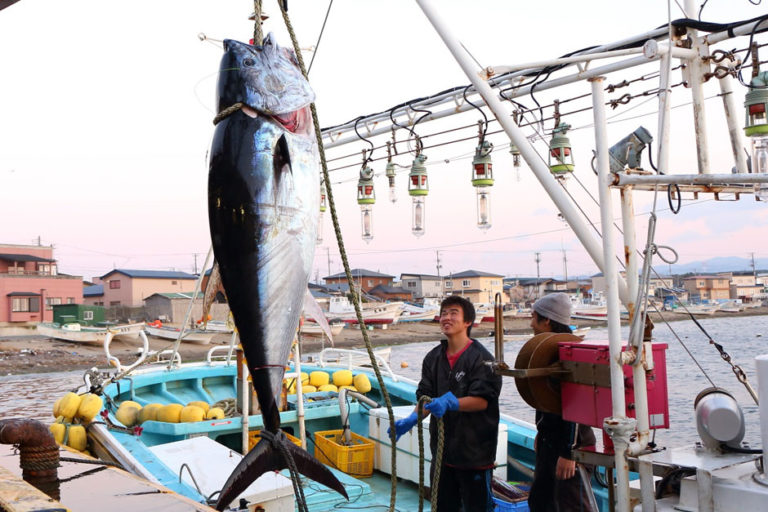Japanese Regional Cuisine Comes with the Region’s Special Stories

Based this background, Japan’s regional cuisine is a product of local people’s wisdom, each accompanied with its own special story. Regional cuisine is indeed part of Japan’s culinary culture.
Shown below are five regional dishes and their recipes from around Japan. Why not prepare them and see for yourself what they taste like?
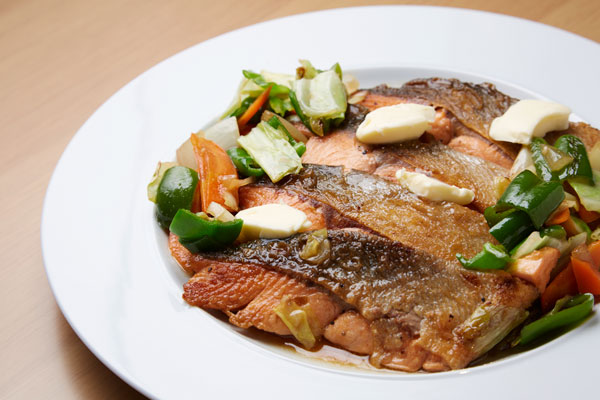
Fishermen’s Food, Enjoyed after Work with Friends “Chanchan” Fried Salmon (Hokkaido)
Chanchan Fried Salmon is a regional dish, supposedly hailing from Hokkaido, whose sea boasts many salmon. The story goes that fishermen used to steam and fry salmon on a large iron plate with mushrooms and vegetables. Some say the unique name chanchan comes from chacha, meaning “quick,” while some say it is because chan (father) used to prepare it.
As it originates from fisherman’s food, its preparation is quite simple. Put salmon and vegetables on an iron plate, add seasonings like miso, sake and sugar, cover with something like a piece of aluminum foil, and steam-fry until ready. The colorful ingredients and the sweet and salty miso flavor are certain to make you hungry!
Written in collaboration with: Toru Tayasu, Lecturer of Japanese cuisine, Koen Gakuen Culinary Institute
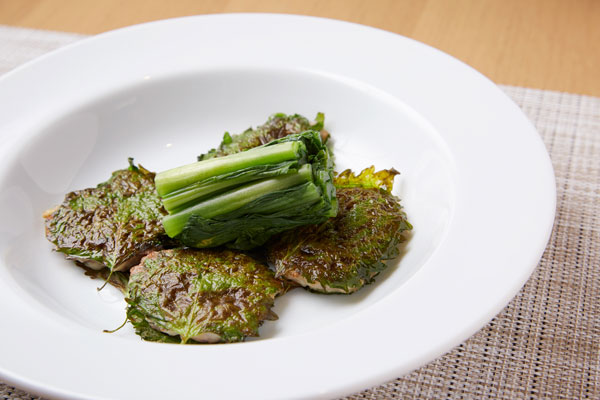
Ocean’s Delicacies Enjoyed on Mountains “Sanga” Fried Horse Mackerel (Chiba Prefecture)
Sanga fries are a regional dish, said to hail from namero, fisherman’s food from the Minami Boso area. Namero is coarsely minced fish, such as horse mackerel, mixed with miso and other condiments.
Fishermen could not take liquid sauces like soy sauce on their fishing journey because they would spill. Instead, they ate their catch with miso because miso never spilled?and thus namero was born. Then local people then began to take namero to the mountains where they worked in vegetable fields, and ate it in mountain huts, fried on abalone shells?apparently the reason why people started to call the dish Sanga, which means “mountain hut.”
Sanga can be made with horse mackerels, sardines, or Pacific sauries, coarsely minced and mixed with condiments like miso, spring onions and perilla leaves. It is then put into shellfish shells and fried. It goes very well with alcohol.
Written in collaboration with: Kazuyuki Kurihara, Chairman, Minami Boso Namero Association
Warming Winter Delicacies Yellowtail with Daikon Radish (Toyama Prefecture)
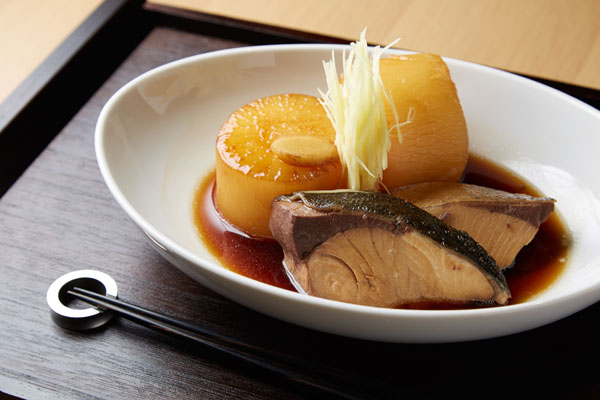
Yellowtail with Daikon Radish is a regional dish with yellowtail, which is caught in large quantities in the rough winter seas of Toyama, and daikon radish which is a winter vegetable. For fishermen working on rocky boats on severe, freezing days, it is a delicacy that is comforting and keeps them warm.
The dish is often prepared with yellowtail’s head and backbones?the parts left behind after the fish meat is stripped off for sashimi and teriyaki. Daikon radish and quickly blanched yellowtail are put together, flavored with soy sauce or miso, and cooked until tender. It is irresistibly delicious, with the radish soaking up the full flavor of the fatty yellowtail.
Written in collaboration with: the Department of Agriculture, Forestry and Fisheries, Toyama Prefecture
Skillful Use of Yuzu from the Country of Miso Yuzu Miso (Tokushima Prefecture)
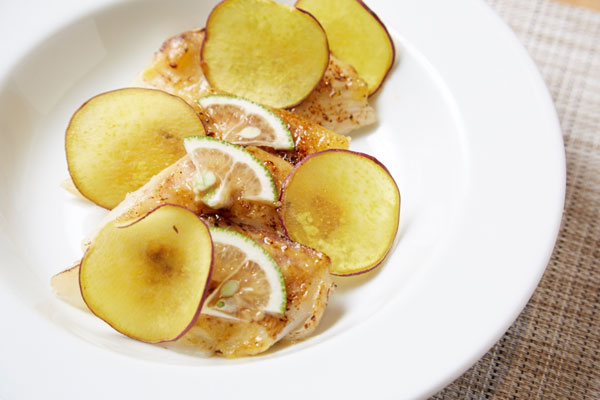
Yuzu Miso is said to have originated as a byproduct of yuzu vinegar, which is prepared by adding salt to yuzu juice. The remaining yuzu skin was then filled with miso and seared over a stove, so that the miso soaked up the yuzu flavor, and was served as a side dish.
Tokushima Prefecture is famous for its miso production. It has special miso called Gozen Miso, which was once presented to the feudal lord. Yuzu miso was born because Tokushima is also the land of yuzu. Nowadays, yuzu miso is also enjoyed with grilled rice balls and grilled fish.
Written in collaboration with: Kumiko Nagao, Associate Professor, Department of Life Science, Tokushima Bunri University Junior Colleges
Vegetable Dish Handy for Summer Koneri (Oita Prefecture, Kumamoto Prefecture)
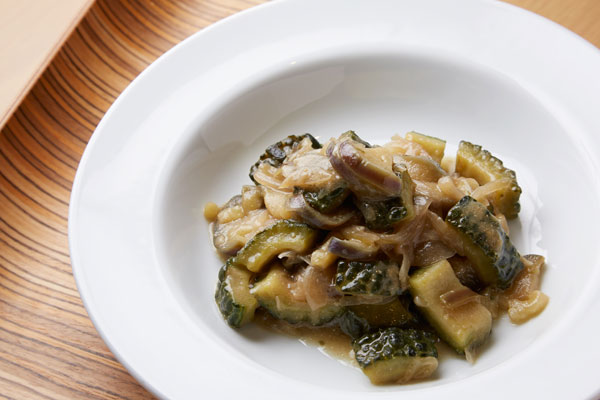
Koneri is a regional dish from Oita and Kumamoto Prefectures, apparently invented as an efficient way to consume eggplants and bitter gourds that are harvested in large numbers in the summer.
Eggplants and bitter gourds (sometimes replaced by green peppers or onions) are stir-fried with cooking oil, flavored with miso or soy sauce, and then thickened with wheat flour dissolved in water. They can also be served on rice. Its thick texture makes it pleasant in the summer when the heat can reduce your appetite, making it an invaluable dish.
The word Koneri is said to be a combination of ko (meaning wheat flour) and neru (to knead)?i.e., the word means “adding flour and kneading”. In Oita Prefecture it is also called Oranda or Nutae.
Written in collaboration with: Yayoko Kaida, Director, Imonotikaraya
Regional Cuisine by Koishikawa Terrace and SHUNGATE
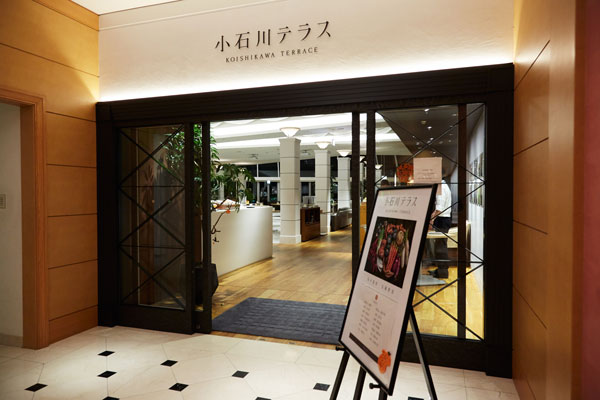
The dishes in the introduced recipes were prepared by Takumi Takashima, chef at the restaurant Koishikawa Terrace in Tokyo’s Bunkyo-ku.
Based on the chef’s expert knowledge of traditional vegetables from across Japan, Koishikawa Terrace offers menus based on select ingredients and cooking methods.
We will introduce the five regional dishes from the article one by one over five weeks, each for a duration of a week, into the restaurant’s lunch menu, between November 2 and December 4, 2015. This is part of the collaborative project between Koishikawa Terrace and SHUNGATE.
These regional dishes, with their deep roots in their respective regions and arranged by Takashima, chef of Koishikawa Terrace, are must-tries.



